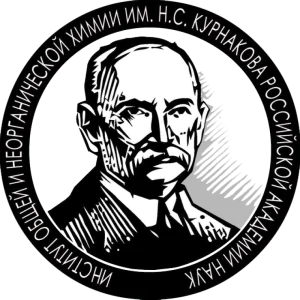Reducing Impedance at a Li-Metal Anode/Garnet-Type Electrolyte Interface Implementing Chemically Resolvable In Layers
Publication type: Journal Article
Publication date: 2022-03-17
scimago Q1
wos Q1
SJR: 1.921
CiteScore: 14.5
Impact factor: 8.2
ISSN: 19448244, 19448252
PubMed ID:
35298130
General Materials Science
Abstract
Garnet-type Li7La3Zr2O12 (LLZO) is a potential electrolyte material for all-solid-state Li-ion batteries mainly because of its reported excellent chemical stability in contact with Li metal. But good wettability of LLZO and 100% surface coverage of lithium are still a challenge. This study elucidated the suitability of magnetron-sputtered indium in Li(In)/LLZO/Li(In) symmetrical model cells as one of the promising interfacial modifications reported in the literature. Importance was given to the impact of preparation parameters on the surface coverage of Li(In)/LLZO interfaces and the consequences of impedance, cycling stability, and critical current density. SEM and EDXS analyses of In layers of thickness 100 nm to 1 μm revealed complete dissolution of indium in the lithium anode after annealing; 300 nm In layers annealed at 220 °C/10 h provided a surface coverage of >80%, best reproducibility, and a supreme interface resistance Rint of 12.4 Ω·cm2. Presuming a surface coverage of 100%, an ultimate interface resistance close to 1 Ω·cm2 can be expected. The critical current density was determined as 200-500 μA/cm2 at a charge of 100-250 μAh, whereas 500 μA/cm2 and above affected cell stability. The increasing voltage plateau was assigned to the increase of the interface resistance Rint and the electrolyte resistance RG+GB. SEM, EDXS, and X-ray microtomography analyses after voltage breakdown confirmed Li-dendrite growth along grain boundaries into LLZO, often curved parallel to the interface, indicating short-circuiting of the solid electrolyte. Grain boundary characteristics are supposed to be decisive for lithium deposition in and failure of garnet-type solid electrolytes after cycling.
Found
Nothing found, try to update filter.
Found
Nothing found, try to update filter.
Top-30
Journals
|
1
2
3
4
5
6
|
|
|
Advanced Functional Materials
6 publications, 12.5%
|
|
|
Journal of Power Sources
4 publications, 8.33%
|
|
|
ACS applied materials & interfaces
4 publications, 8.33%
|
|
|
Small
3 publications, 6.25%
|
|
|
Joule
2 publications, 4.17%
|
|
|
Batteries
2 publications, 4.17%
|
|
|
Advanced Energy Materials
2 publications, 4.17%
|
|
|
Electrochimica Acta
2 publications, 4.17%
|
|
|
Angewandte Chemie - International Edition
2 publications, 4.17%
|
|
|
Angewandte Chemie
2 publications, 4.17%
|
|
|
Chemical Engineering Journal
2 publications, 4.17%
|
|
|
Energy Storage Materials
2 publications, 4.17%
|
|
|
ACS Energy Letters
1 publication, 2.08%
|
|
|
Materials Advances
1 publication, 2.08%
|
|
|
Materials Horizons
1 publication, 2.08%
|
|
|
Materials
1 publication, 2.08%
|
|
|
Energy and Environmental Science
1 publication, 2.08%
|
|
|
Journal of Energy Storage
1 publication, 2.08%
|
|
|
SusMat
1 publication, 2.08%
|
|
|
Russian Chemical Reviews
1 publication, 2.08%
|
|
|
ACS Nano
1 publication, 2.08%
|
|
|
Journal of Materials Science
1 publication, 2.08%
|
|
|
ChemElectroChem
1 publication, 2.08%
|
|
|
Chemistry of Materials
1 publication, 2.08%
|
|
|
Journal of Materials Chemistry A
1 publication, 2.08%
|
|
|
Journal of Electroanalytical Chemistry
1 publication, 2.08%
|
|
|
Journal of Alloys and Compounds
1 publication, 2.08%
|
|
|
1
2
3
4
5
6
|
Publishers
|
2
4
6
8
10
12
14
16
18
|
|
|
Wiley
17 publications, 35.42%
|
|
|
Elsevier
15 publications, 31.25%
|
|
|
American Chemical Society (ACS)
7 publications, 14.58%
|
|
|
Royal Society of Chemistry (RSC)
4 publications, 8.33%
|
|
|
MDPI
3 publications, 6.25%
|
|
|
Autonomous Non-profit Organization Editorial Board of the journal Uspekhi Khimii
1 publication, 2.08%
|
|
|
Springer Nature
1 publication, 2.08%
|
|
|
2
4
6
8
10
12
14
16
18
|
- We do not take into account publications without a DOI.
- Statistics recalculated weekly.
Are you a researcher?
Create a profile to get free access to personal recommendations for colleagues and new articles.
Metrics
48
Total citations:
48
Citations from 2024:
26
(54.17%)
Cite this
GOST |
RIS |
BibTex |
MLA
Cite this
GOST
Copy
Müller M. et al. Reducing Impedance at a Li-Metal Anode/Garnet-Type Electrolyte Interface Implementing Chemically Resolvable In Layers // ACS applied materials & interfaces. 2022. Vol. 14. No. 12. pp. 14739-14752.
GOST all authors (up to 50)
Copy
Müller M., Schmieg J., Dierickx S., Joos J., Weber A., Gerthsen D., Ivers-Tiffée E. Reducing Impedance at a Li-Metal Anode/Garnet-Type Electrolyte Interface Implementing Chemically Resolvable In Layers // ACS applied materials & interfaces. 2022. Vol. 14. No. 12. pp. 14739-14752.
Cite this
RIS
Copy
TY - JOUR
DO - 10.1021/acsami.1c25257
UR - https://doi.org/10.1021/acsami.1c25257
TI - Reducing Impedance at a Li-Metal Anode/Garnet-Type Electrolyte Interface Implementing Chemically Resolvable In Layers
T2 - ACS applied materials & interfaces
AU - Müller, Marius
AU - Schmieg, Johannes
AU - Dierickx, Sebastian
AU - Joos, Jochen
AU - Weber, Andre
AU - Gerthsen, Dagmar
AU - Ivers-Tiffée, Ellen
PY - 2022
DA - 2022/03/17
PB - American Chemical Society (ACS)
SP - 14739-14752
IS - 12
VL - 14
PMID - 35298130
SN - 1944-8244
SN - 1944-8252
ER -
Cite this
BibTex (up to 50 authors)
Copy
@article{2022_Müller,
author = {Marius Müller and Johannes Schmieg and Sebastian Dierickx and Jochen Joos and Andre Weber and Dagmar Gerthsen and Ellen Ivers-Tiffée},
title = {Reducing Impedance at a Li-Metal Anode/Garnet-Type Electrolyte Interface Implementing Chemically Resolvable In Layers},
journal = {ACS applied materials & interfaces},
year = {2022},
volume = {14},
publisher = {American Chemical Society (ACS)},
month = {mar},
url = {https://doi.org/10.1021/acsami.1c25257},
number = {12},
pages = {14739--14752},
doi = {10.1021/acsami.1c25257}
}
Cite this
MLA
Copy
Müller, Marius, et al. “Reducing Impedance at a Li-Metal Anode/Garnet-Type Electrolyte Interface Implementing Chemically Resolvable In Layers.” ACS applied materials & interfaces, vol. 14, no. 12, Mar. 2022, pp. 14739-14752. https://doi.org/10.1021/acsami.1c25257.









